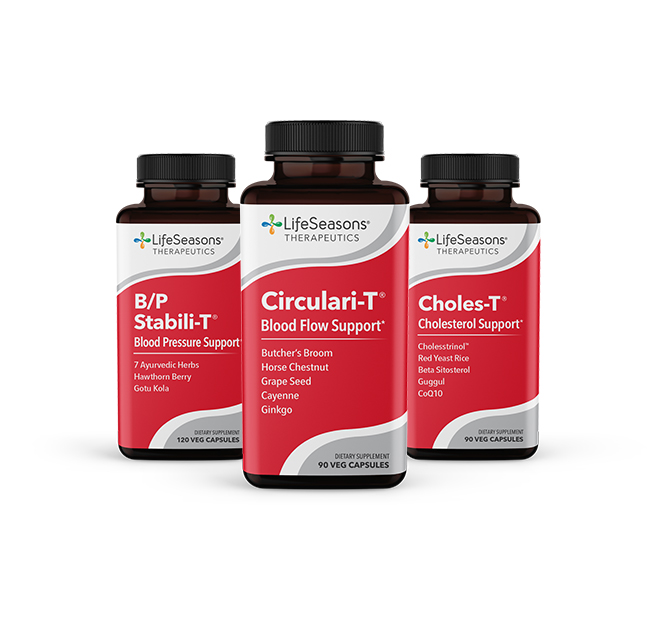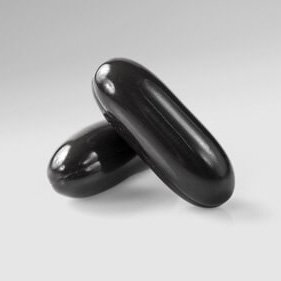BACKGROUND
Ingredient Type: Mineral (essential trace element)
Also Known As: Trivalent chromium (Cr III), Chromium niacinate, Chromium polyniotinate
Chromium (Cr) is a white, hard, brittle metal that is an essential trace element. The activity of chromium depends on its valence state. It exists in two forms: trivalent and hexavalent states. Trivalent chromium (Cr III), the form found in foods and supplements, is biologically active and safe (81).
Chromium is sometimes referred to as glucose tolerance factor (GTF), but GTF is actually a complex of molecules found in the body that includes chromium bound to single molecules of glycine, cysteine, glutamic acid, and two molecules of nicotinic acid. Chromium is thought to be the active component of the complex. Some dietary sources of chromium include canned foods (due to chromium leaching from the can), meats and animal fats, fish, brown sugar, coffee, tea, some spices, calf liver, whole wheat bread, rye bread, and brewer’s yeast (82).
There is no reliable method available to diagnose chromium deficiency, other than observing the outcome following supplementation in patients suspected of being deficient (16). Symptomatic chromium deficiency is most often due to malnutrition, pregnancy, stress, or long-term use of chromium deficient total parenteral nutrition (TPN). Symptoms include severe glucose intolerance, weight loss, and metabolic encephalopathy (83). Chromium retention decreases with aging, as found in a very large collection of hair, sweat, and serum samples (84). Whether this is due to inadequate nutrition or to normal physiology is unknown (85).
Chromium was discovered in France in the late 1790s, but it took until the 1960s before it was recognized as being an important trace element and important for insulin function (82).
TRADITIONAL USES
Trivalent chromium has been traditionally used to enhance the action of insulin, correct diabetes symptoms, hypertension, and chromium deficiency among many alternative therapies (9,13,14,15,16,17,18).
WHAT DOES SCIENCE TELL US?
Chromium Probably Helps Decrease Blood Glucose:
While there is some consensus in the literature that chromium decreases blood glucose in type two diabetes; however, there are some disagreements (4/17 clinical studies) potentially due to differing methods and dosages administered. Studies on chromium’s beneficial effect on decreasing blood glucose are mostly in subjects with type 2 diabetes. Studies range in durations from 90 days to six months with chromium dosages from 200mcg to 1000mcg in various forms. Predominantly chromium picolinate (CrPic) but also Cr III brewer’s yeast, chromium enriched yeast, chromium in milk powder, as well as chromium picolinate paired with Vitamin C, E and biotin were studied. Twelve out of sixteen clinical trials concluded chromium effectiveness in decreasing blood glucose in type 2 diabetes subjects. Two out of three systematic reviews confirmed the same outcomes. Among the studies in which the blood glucose was not decreased as a result of the chromium supplementation are those conducted in overweight subjects, elderly, non-insulin dependent diabetes, those with impaired glucose tolerance, persons at risk for diabetes, and patients with HIV infection (61,62,63,65,66,68,72).
A 2014 meta-analysis systematically reviewed the efficacy and safety of chromium in diabetes mellitus. The review included twenty-five randomized controlled trials with chromium alone (twenty-two studies) or paired with other supplementation (three studies; chromium yeast + vitamins C and E, and CrPic + biotin) with at least three weeks in duration for fasting plasma glucose results reporting and at least eight weeks in duration for HbA1c reporting. The results of the review revealed a significant improvement in glycaemic control (HbA1c, p= 0.001; Fasting plasma glucose, p= 0.001) in both chromium alone and paired studies, and a significant reduction in triglycerides and increase in HDL-C levels in the chromium (CrPic) alone studies (20).
A 2013 systematic review which included seven studies between 2000 and 2012, evaluated the effect of chromium on glucose and lipid profiles in patients with type 2 diabetes. The review results concluded that patients taking the Cr supplement in comparison to Pl saw a change (p= 0.1) in HbA1c, a change (p< 0.0001) of fasting blood glucose, a change (p= 0.54) in total cholesterol, and a change(p= 0.18) in triglycerides. Chromium’s effectiveness in lowering FBS (fasting blood sugar) has been confirmed, even though it was mild; however, it did not have an effect on HbA1c, lipids and BMI (body mass index). It would be prudent to note that some of the trials included in the review involved additional ingredients alongside chromium, thus it wasn’t always studied in isolation (3).
A 2007 systematic review evaluated the effect of chromium supplementation on glucose metabolism and lipids in forty-one randomized controlled trials which included studies with three weeks or more in duration and ten or more subjects. The following supplementations were in the evaluated studies: brewer’s yeast (1.28–400 mcg/day, 10 studies), chromium chloride (50–600 mcg/day, 15 studies), chromium nicotinate (200–800 mcg/day, 5 studies), chromium picolinate (60–1,000 mcg/day, 15 studies). The review showed an improvement in glycosylated hemoglobin levels (by -0.6%) and an improvement in fasting glucose (by -1.0 mmol/l); this did not include lipids. The review concluded chromium’s effectiveness in improving glycemia among patients with diabetes; it also noted the need for future studies to address limitations of the trials included to confirm chromium’s beneficial effect (5).
A 2002 systematic review and meta-analysis of fifteen randomized clinical trials (assessing the effect of chromium on glucose, insulin, or glycated hemoglobin) investigated glucose and insulin responses to chromium in subjects at high risk of type 2 diabetes. The study included 193 subjects with type 2 diabetes and 425 in good health or with impaired glucose tolerance.
The results of the review revealed the following for the chromium supplemented groups,
- A reduction in glucose and insulin concentration in 155 diabetic subjects in China, while data combined from 38 diabetic subjects in the other studies did not show the same results
- A significant reduction in HbA1c (glycated hemoglobin) in the diabetic subjects in China while the other two studied did not show the same impact (one study with type 2 diabetes, with impaired glucose tolerance, and healthy subjects)
The review concluded chromium’s ineffectiveness in reducing glucose or insulin concentrations in nondiabetic subjects while due to the mix results of data on subjects with diabetes, the results are considered inconclusive (66).
Chromium Might Reduce Appetite:
Chromium appears to reduce the appetite, specifically in those who reported carbohydrate cravings, as well as overweight adults with binge eating disorders. For subjects with atypical depression, chromium improved appetite increase. No changes were noted in subjects with type 2 diabetes (62).
Chromium’s influence on food intake and satiety in healthy, overweight, adult women who reported craving carbohydrates was investigated in a randomized, double-blind, placebo-controlled study. The study consisted of two parts (first on the aforementioned population and the second study for confirmatory purposes on rats). In the first part forty-two subjects (overweight adult women with carbohydrate cravings) were divided into two groups and given either 1,000 mg of CrPic or placebo for a duration of eight weeks. Post assessment results of the first part in the chromium group in comparison with placebo revealed:
- A reduction in food intake (p<0.0001)
- A reduction in hunger levels (p<0.05)
- A reduction in fat cravings (p<0.0001)
- A tendency in body weight decrease (p=0.08)
The second part of the study on rats showed a subtle decrease in food intake at the highest dose (p=0.03); a decrease in food intake of the CrPic dose-dependently when administered centrally (p<0.05). The study concluded chromium’s role in regulating food intake potentially mediated by a direct effect on the brain (rather than changes in glucose metabolism), in the studied subjects (70).
In a randomized, double-blind, placebo-controlled study, twenty-four subjects (overweight adults with binge eating disorder) were divided into three groups and given either 1000mcg Cr/day (high dose), 600mcg Cr/day (moderate dose), or placebo for six months. Post assessment results showed in the chromium groups a significant reduction of fasting glucose (p<0.01); especially noted in the high dose compared to the moderate dose group and a great reduction in binge frequency, weight, and symptoms of depression in comparison to the placebo. The study concluded that the initial findings confirm chromium’s potential in regulating normal glucose, reduce binge eating, promote weight loss, and reduce symptoms of depression in the studied subjects (overweight adults with binge eating disorder) (58).
Chromium Might Help Support a Positive Mood:
Only three studies have been identified on the effect of chromium in aiding depression; as such, the evidence is insufficient. The evidence that does exist suggests that chromium is effective in in lessening depressive symptoms in subjects with treatment-resistant rapid-cycling bipolar disorder and potentiating antidepressant pharmacotherapy for dysthymic disorder.
A two-year, open-label pilot study (without a placebo) investigated adjunctive chromium in patients with treatment-resistant rapid-cycling bipolar disorder. Subjects with bipolar disorder were given 600-800mcg/day chromium for three weeks which resulted in small numbers reporting less depressive symptoms (79).
A study investigated chromium’s potentiation of antidepressant pharmacotherapy in five subjects with dysthymic disorder. Due to a patient’s dramatic response (remission in dysthymic symptoms, notably depression) to chromium supplementation to sertraline pharmacotherapy for dysthymic disorder, multiple single-blind and open-label trials were initiated to assesschromium picolinate or chromium polynicotinate in treating antidepressant-refractory dysthymic disorder. The results of this study noted chromium’s potential in potentiating antidepressant pharmacotherapy for dysthymic disorder (80).
A placebo-controlled, double-blind, pilot study investigated chromium’s effectiveness in atypical depression. Fifteen subjects (patients with DSM-IV major depressive disorder, atypical type) were divided into two groups and given either 600 mcg of CrPic or placebo for a duration of eight weeks. Post assessment results revealed that seven (70%) CrPic patients met responder criteria (p =.02) compared to zero in placebo as well as other outcomes with greater effect. The study concluded chromium’s potential benefits, although statistical significance was not met. It would be prudent to note that this study was supported by Nutrition 21 grant which is a producer of chromium supplement (45).
A double-blind, placebo-controlled, multicenter, exploratory study investigated chromium’s effect on carbohydrate craving in atypical depression subjects. One hundred ten subjects (with atypical depression) were divided into two groups and given either 600 mcg/day of CrPic or placebo for eight weeks. Post assessment results revealed the following in the chromium group compared to placebo:
- Significant improvement from baseline on four 29-item Hamilton Depression Rating
- A subset analysis of forty-one subjects in the intent-to-treat population revealed the following (for the chromium group compared to placebo),
- Significantly greater (p < 0.05) response on total the 29-item Hamilton Depression Rating Scale scores
- Significantly greater improvements on the five 29-item Hamilton Depression Rating Scale items; these included appetite increase, increased eating, carbohydrate craving, and genital symptoms such as libido
The study concluded chromium’s effectiveness in improving appetite, eating, carbohydrate craving, diurnal feelings in the studied subjects (adults with atypical depression, mostly overweight or obese). Chromium has also proven to be effective in improving the overall scores of the 29-item Hamilton Depression Rating Scale in subjects with high carbohydrate craving. The results of the study suggest chromium’s beneficial effect in subjects with atypical depression who also have severe carbohydrate craving (78).
Chromium Possibly Supports Healthy Skin:
A single study was retrieved on the effect of chromium on acne; this renders the existing evidence inadequate. Regardless, the existing evidence suggests that chromium may be effective in reducing acne in women with polycystic ovary syndrome (31).
Chromium Might Lower Blood Lipid Levels:
Studies in which chromium was supplemented (chromium picolinate, chromium-containing brewer’s yeast, or chromium chloride containing elemental chromium) in subjects with hyperlipidemia or moderately elevated cholesterol levels appeared to decrease (in comparison to placebo) low-density lipoprotein cholesterol and total cholesterol.
A double-blind, crossover study investigated chromium’s effect on serum cholesterol and apolipoprotein fractions in human subjects. Twenty-eight subjects were divided into two groups and given either 200 mcg/day CrPic or a placebo for a duration of forty-two days with a fourteen-day period off capsules between treatments. Post assessment results revealed the following effects of chromium:
- A significant decrease in total cholesterol levels
- A significant decrease in low-density lipoprotein (LDL) cholesterol
- A significant decrease in apolipoprotein B (principal protein of the LDL fraction)
- A substantial increase in the apolipoprotein A-I concentration (principal protein of the high-density lipoprotein (HDL) fraction)
- A slight elevation of the HDL-cholesterol level
The study concluded chromium’s effectiveness in lowering blood lipids (32).
Another study investigated the effectiveness of brewer’s year as well as chromium chloride on serum cholesterol in adults. Thirty subjects (mean age=52 yrs, with a mean total cholesterol concentration of 236 mg/dL) were divided into three groups and were given either 15 mcg of chromium (brewer’s yeast), 50 mcg of chromium as chromium chloride or placebo for a duration of twelve weeks. Post assessment results showed a significant (p<0.005) decline of serum total cholesterol in the chromium chloride group (33).
A placebo-controlled, double-blinded, randomized study investigated the effect of CrPic in combination with biotin’s influence on glycemic control in poorly controlled patients with type 2 diabetes mellitus. Forty-three subjects (with impaired glycemic control; 2-h glucose >200 mg/dL; glycated hemoglobin >or=7%; despite treatments with oral antihyperglycemic agents) were divided into two groups and given either 600 mcg of CrPic and 2 mg/day of biotin for four weeks. The pilot study concluded chromium’s combination with biotin to be effective in improving glucose management and a few lipid measurements in the studied subjects (poorly controlled patients with diabetes receiving antidiabetic therapy), thus presenting a potential in improving lipid metabolism (34).
SAFETY
Chromium is considered safe in the recommended dosages (25).
Interactions:
Moderate
- Antidiabetic drugs that include glimepiride (Amaryl), glyburide (DiaBeta, Glynase PresTab, Micronase), insulin, metformin (Glucophage), pioglitazone (Actos), rosiglitazone (Avandia) due to chromium’s potential additive effects (2)
- Levothyroxine (i.e. Synthroid, Levothroid, Levoxyl) due to chromium’s potential binding effects (41)
Minor
- Antacids, Corticosteroids, H2 blockers (i.e. cimetidine, famotidine, nizatidine, rantidine), Proton-pump inhibitors (i.e. omeprazole, lansoprazole, rabeprazole, pantoprazole, esomeprazole) may impair chromium’s absorption (2).
- Beta-blockers (i.e. atenolol or propanolol), Nicotinic acid, Nonsteroidal anti-inflammatory drugs (NSAIDS), Prostaglandin inhibitors (i.e. ibuprofen, indomethacin, naproxen, piroxicam, aspirin) due to their potential to increase chromium absorption (2).
Side-Effects:
- Potential mood changes, headaches, sleep disturbances, insomnia, paresthesia, insomnia, dizziness, vertigo, irritability, moto dysfunction, hypoglycemia, and temporary gastrointestinal irritation may occur (42,43,44,45,46,47,48,49)
- Nausea, vomiting, diarrhea, decreased appetite, kidney and liver damage, constipation, and flatulence (21,26,46,47,50,51,52,55,56)
REFERENCES
- Chromium Compounds Hazard Summary. https://www.epa.gov/sites/production/files/2016-09/documents/chromium-compounds.pdf. Accessed April 8, 2018.
- Dietary Supplement Fact Sheet: Chromium. https://ods.od.nih.gov/factsheets/Chromium-HealthProfessional/. Accessed April 10, 2018.
- Abdollahi M, Farshchi A, Nikfar S, Seyedifar M. Effect of Chromium on Glucose and Lipid Profiles in Patients with Type 2 Diabetes; A Meta-analysis Review of Randomized Trials. Journal of Pharmacy & Pharmaceutical Sciences. 2013;16(1):99. doi:10.18433/j3g022.
- Cefalu WT, Hu FB. Role of chromium in human health and in diabetes. Diabetes Care 2004;27:2741-51.
- Balk E, Tatsioni A, Lichtenstein A, Lau J, Pittas A. Effect of Chromium Supplementation on Glucose Metabolism and Lipids: A systematic review of randomized controlled trials. Diabetes Care. 2007;30(8):2154-2163. doi:10.2337/dc06-0996.
- Lanca S, Alves A, Vieira AI, et al. Chromium-induced toxic hepatitis. Eur J Intern Med 2002;13:518-20.
- Gibb HJ, Lees PS, Pinsky PF, Rooney BC. Lung cancer among workers in chromium chemical production. Am J Ind.Med 2000;38(2):115-126.
- Lees PS. Chromium and disease: review of epidemiologic studies with particular reference to etiologic information provided by measures of exposure. Environ Health Perspect. 1991;92:93-104.
- Mertz W. Interaction of chromium with insulin: a progress report. Nutr Rev. 1998;56:174-7.
- Schwarz K, Mertz W. Chromium(III) and the glucose tolerance factor. Arch Biochem Biophys 1959;85:292-5.
- Vincent J. The Nutritional Biochemistry Of Chromium (III). Elsevier B.V.; 2007:1-40.
- Davies S, Howard JM, Hunnisett A, et al. Age-related decreases in chromium levels in 51,665 hair, sweat, and serum samples from 40,872 patients – implications for the prevention of cardiovascular disease and type II diabetes. Metabolism 1997;46:469-73
- Mertz W. Chromium occurrence and function in biological systems. Physiol Rev 1969;49:163-239.
- Mertz W. Chromium in human nutrition: a review. J Nutr 1993;123:626-33.
- Jeejeebhoy KN, Chu RC, Marliss EB, Greenberg GR, Bruce-Robertson A. Chromium deficiency, glucose intolerance, and neuropathy reversed by chromium supplementation in a patient receiving long-term total parenteral nutrition. Am J Clin Nutr 1977;30:531-8. DOI: 10.1093/ajcn/30.4.531.
- Freund H, Atamian S, Fischer JE. Chromium deficiency during total parenteral nutrition. JAMA 1979;241:496-8.
- Brown RO, Forloines-Lynn S, Cross RE, Heizer WD. Chromium deficiency after long-term total parenteral nutrition. Dig Dis Sci 1986;31:661-4.
- Afolayan A, Wintola O. Dietary Supplements in the Management of Hypertension and Diabetes – A Review. African Journal of Traditional, Complementary and Alternative Medicines. 2014;11(3):248. doi:10.4314/ajtcam.v11i3.35.
- Paiva A, Lima J, Medeiros A et al. Beneficial effects of oral chromium picolinate supplementation on glycemic control in patients with type 2 diabetes: A randomized clinical study. Journal of Trace Elements in Medicine and Biology. 2015;32:66-72. doi:10.1016/j.jtemb.2015.05.006.
- Suksomboon N, Poolsup N, Yuwanakorn A. Systematic review and meta-analysis of the efficacy and safety of chromium supplementation in diabetes. J Clin Pharm Ther 2014;39(3):292-306. DOI: 10.1111/jcpt.12147
- Krol E, Krejpcio Z, Byks H, et al. Effects of chromium brewer’s yeast supplementation on body mass, blood carbohydrates, and lipids and minerals in type 2 diabetic patients. Biol.Trace Elem.Res. 2011;143(2):726-737. DOI: 10.1007/s12011-010-8917-5
- Sharma S, Agrawal R, Choudhary M, Jain S, Goyal S, Agarwal V. Beneficial effect of chromium supplementation on glucose, HbA1C and lipid variables in individuals with newly onset type-2 diabetes. Journal of Trace Elements in Medicine and Biology. 2011;25(3):149-153. doi:10.1016/j.jtemb.2011.03.003.
- Lai MH. Antioxidant effects and insulin resistance improvement of chromium combined with vitamin C and E supplementation for type 2 diabetes mellitus. J Clin Biochem.Nutr 2008;43(3):191-198. doi:10.3164/jcbn.2008064
- Martin J, Wang ZQ, Zhang XH, et al. Chromium picolinate supplementation attenuates body weight gain and increases insulin sensitivity in subjects with type 2 diabetes. Diabetes Care 2006;29:1826-32. DOI: 10.2337/dc06-0254
- Racek J, Trefil L, Rajdl D, et al. Influence of Chromium-Enriched Yeast on Blood Glucose and Insulin Variables, Blood Lipids, and Markers of Oxidative Stress in Subjects with Type 2 Diabetes Mellitus. Biol Trace Elem Res. 2006;109(3):215-230. doi:10.1385/bter:109:3:215.
- Pei D, Hsieh C, Hung Y, et al. The influence of chromium chloride–containing milk to glycemic control of patients with type 2 diabetes mellitus: a randomized, double-blind, placebo-controlled trial. Metabolism. 2006;55(7):923-927. doi:10.1016/j.metabol.2006.02.021.
- Rabinovitz H, Friedensohn A, Leibovitz A, et al. Effect of chromium supplementation on blood glucose and lipid levels in type 2 diabetes mellitus elderly patients. Int J Vitam Nutr Res 2004;74:178-82. DOI: 10.1024/0300-9831.74.3.178
- Ghosh D, Bhattacharya B, Mukherjee B et al. Role of chromium supplementation in Indians with type 2 diabetes mellitus. J Nutr Biochem. 2002;13(11):690-697. doi:10.1016/s0955-2863(02)00220-6.
- Bahijiri S, Mira S, Mufti A, Ajabnoor M. The effects of inorganic chromium and brewer’s yeast supplementation on glucose tolerance, serum lipids and drug dosage in individuals with type 2 diabetes. Saudi Med J. 2000;21(9):831-7.
- Iqbal N, Cardillo S, Volger S et al. Chromium Picolinate Does Not Improve Key Features of Metabolic Syndrome in Obese Nondiabetic Adults. Metab Syndr Relat Disord. 2009;7(2):143-150. doi:10.1089/met.2008.0048.
- Jamilian M, Bahmani F, Siavashani M, et al. The Effects of Chromium Supplementation on Endocrine Profiles, Biomarkers of Inflammation, and Oxidative Stress in Women with Polycystic Ovary Syndrome: a Randomized, Double-Blind, Placebo-Controlled Trial. Biol Trace Elem Res. 2015;172(1):72-78. doi:10.1007/s12011-015-0570-6.
- Press, RI, Geller, J, Evans, GW. The effect of chromium picolinate on serum cholesterol and apolipoprotein fractions in human subjects. West J Med 1990;152(1):41-45.
- Wang M, Fox E, Stoecker B, et al. Serum cholesterol of adults supplemented with brewer’s yeast or chromium chloride. Nutrition Research. 1989;9(9):989-998. doi:10.1016/s0271-5317(89)80059-4.
- Singer G, Geohas J. The Effect of Chromium Picolinate and Biotin Supplementation on Glycemic Control in Poorly Controlled Patients with Type 2 Diabetes Mellitus: A Placebo-Controlled, Double-Blinded, Randomized Trial. Diabetes Technol Ther. 2006;8(6):636-643. doi:10.1089/dia.2006.8.636.
- Abraham AS, Brooks BA, Eylath U. The effects of chromium supplementation on serum glucose and lipids in patients with and without non-insulin dependent diabetes. Metabolism 1992;41:768-71.
- Elwood, JC, Nash, DT, Streeten, DH. Effect of high-chromium brewer’s yeast on human serum lipids. J.Am.Coll.Nutr. 1982;1(3):263-274.
- Preuss, HG, Wallerstedt, D, Talpur, N, et. al. Effects of niacin-bound chromium and grape seed proanthocyanidin extract on the lipid profile of hypercholesterolemic subjects: a pilot study. J Med 2000;31(5-6):227-246.
- Girola M, De Bernardi M, and Contos S, et al. Dose effect in lipid-lowering activity of a new dietary integrator (chitosan, Garcinia cambogia extract and chrome). Acta Toxicol Ther 1996;17(1):25-40.
- Martino F, Puddu PE, Pannarale G, Colantoni C, Martino E, Niglio T, Zanoni C, Barillà F. Low dose chromium-polynicotinate or policosanol is effective in hypercholesterolemic children only in combination with glucomannan. Atherosclerosis. 2013;228(1):198-202. DOI: 10.1016/j.atherosclerosis.2013.02.005
- Institute of Medicine, Food and Nutrition Board. Dietary Reference Intakes for Vitamin A, Vitamin K, Arsenic, Boron, Chromium, Copper, Iodine, Iron, Manganese, Molybdenum, Nickel, Silicon, Vanadium, and Zinc. National Academy Press, Washington, DC, 2001. https://www.ncbi.nlm.nih.gov/books/NBK222310/
- John-Kalarickal J, Pearlman G, Carlson HE. New medications which decrease levothyroxine absorption. Thyroid 2007;17:763-5. DOI:10.1089/thy.2007.0060
- Fox GN, Sabovic Z. Chromium picolinate supplementation for diabetes mellitus. J Fam Pract 1998;46:83-6.
- Trent LK, Thieding-Cancel D. Effects of chromium picolinate on body composition. J Sports Med Phys Fitness 1995;35:273-80.
- McCarty MF. Over-the-counter chromium and renal failure. Ann.Intern.Med 10-15-1997;127(8 Pt 1):654-655.
- Davidson JR, Abraham K, Connor KM, McLeod MN. Effectiveness of chromium in atypical depression: a placebo-controlled trial. Biol Psychiatry 2003;53:261-4.
- Kleefstra N, Houweling ST, Jansman FG, et al. Chromium treatment has no effect in patients with poorly controlled, insulin-treated type 2 diabetes in an obese Western population: a randomized, double-blind, placebo-controlled trial. Diabetes Care 2006;29:521-5.
- Pittler MH, Ernst E. Dietary supplements for body-weight reduction: a systematic review. Am.J.Clin Nutr. 2004;79(4):529-536. DOI: 10.1093/ajcn/79.4.529
- Bharmal SV, MoyesmV, Ahmed S, Grossman A. Hypoglycaemia: possible mediation by chromium salt medication. Hormones.(Athens.) 2010;9(2):181-183.
- Bunner S, McGinnis R. Chromium-induced hypoglycemia. Psychosomatics 1998;39(3):298-299.
- Kleefstra, N, Houweling, ST, Bakker, SJ, et al. Chromium treatment has no effect in patients with type 2 diabetes in a Western population: a randomized, double-blind, placebo-controlled trial. Diabetes Care 2007;30(5):1092-1096. DOI: 10.2337/dc06-2192
- Parsons, A, Ingram, J, Inglis, J, et al. A proof of concept randomised placebo controlled factorial trial to examine the efficacy of St John’s wort for smoking cessation and chromium to prevent weight gain on smoking cessation. Drug Alcohol Depend. 6-1-2009;102(1-3):116-122. DOI: 10.1016/j.drugalcdep.2009.02.006
- Cerulli J, Grabe DW, Gauthier I, et al. Chromium picolinate toxicity. Ann Pharmacother 1998;32:428-31. DOI: 10.1345/aph.17327
- Martin WR, Fuller RE. Suspected chromium picolinate-induced rhabdomyolysis. Pharmacotherapy 1998;18(4):860-862.
- Huszonek J. Over-the-counter chromium picolinate. Am J Psychiatry 1993;150(10):1560-1561.
- Wasser WG, Feldman NS, D’Agati VD. Chronic renal failure after ingestion of over-the-counter chromium picolinate. [letter]. Ann Intern Med 1997;126:410
- Wani S, Weskamp C, Marple J, Spry L. Acute tubular necrosis associated with chromium picolinate-containing dietary supplement. Ann Pharmacother 2006;40:563-6. DOI: 10.1345/aph.1G469
- Anderson RA, Cheng N, Bryden NA, et al. Elevated intakes of supplemental chromium improve glucose and insulin variables in individuals with type 2 diabetes. Diabetes 1997;46:1786-91.
- Brownley K, Von Holle A, Hamer R, La Via M, Bulik C. A double-blind, randomized pilot trial of chromium picolinate for binge eating disorder: Results of the Binge Eating and Chromium (BEACh) Study. J Psychosom Res. 2013;75(1):36-42. doi:10.1016/j.jpsychores.2013.03.092.
- Frauchiger M, Wenk C, Colombani P. Effects of Acute Chromium Supplementation on Postprandial Metabolism in Healthy Young Men. J Am Coll Nutr. 2004;23(4):351-357. doi:10.1080/07315724.2004.10719378.
- Albarracin C, Fuqua B, Evans J, Goldfine I. Chromium picolinate and biotin combination improves glucose metabolism in treated, uncontrolled overweight to obese patients with type 2 diabetes. Diabetes Metab Res Rev. 2007;24(1):41-51. doi:10.1002/dmrr.755.
- Jain SK, Kahlon G, Morehead L, et al. Effect of chromium dinicocysteinate supplementation on circulating levels of insulin, TNF-alpha, oxidative stress, and insulin resistance in type 2 diabetic subjects: randomized, double-blind, placebo-controlled study. Mol.Nutr.Food Res. 2012;56(8):1333-1341. DOI: 10.1002/mnfr.201100719
- Cefalu W, Rood J, Pinsonat P et al. Characterization of the metabolic and physiologic response to chromium supplementation in subjects with type 2 diabetes mellitus. Metabolism. 2010;59(5):755-762. doi:10.1016/j.metabol.2009.09.023.
- Kleefstra N, Houweling S, Bakker S et al. Chromium Treatment Has No Effect in Patients With Type 2 Diabetes in a Western Population: A randomized, double-blind, placebo-controlled trial. Diabetes Care. 2007;30(5):1092-1096. doi:10.2337/dc06-2192.
- Vrtovec M, Vrtovec B, Briski A, et al. Chromium supplementation shortens QTc interval duration in patients with type 2 diabetes mellitus. Am Heart J. 2005;149(4):632-636. doi:10.1016/j.ahj.2004.07.021.
- Ali A, Ma Y, Reynolds J, et al. Chromium Effects on Glucose Tolerance and Insulin Sensitivity in Persons at Risk for Diabetes Mellitus. Endocrine Practice. 2011;17(1):16-25. doi:10.4158/ep10131.or.
- Althius MD, Jordon NE, Ludington EA, Wittes JT. Glucose and insulin responses to dietary chromium supplements: a meta-analysis. Am J Clin Nutr 2002;76:148-55. DOI: 10.1093/ajcn/76.1.148
- Krikorian R, Eliassen J, Boespflug E, et al. Improved cognitive-cerebral function in older adults with chromium supplementation. Nutr Neurosci. 2010;13(3):116-122. doi:10.1179/147683010×12611460764084.
- Aghdassi E, Arendt B, Salit I et al. In Patients with HIV-Infection, Chromium Supplementation Improves Insulin Resistance and Other Metabolic Abnormalities: A Randomized, Double-Blind, Placebo Controlled Trial. Curr HIV Res. 2010;8(2):113-120. doi:10.2174/157016210790442687.
- Yazaki Y, Faridi Z, Ma Y et al. A Pilot Study of Chromium Picolinate for Weight Loss. The Journal of Alternative and Complementary Medicine. 2010;16(3):291-299. doi:10.1089/acm.2009.0286.
- Anton S, Morrison C, Cefalu W et al. Effects of Chromium Picolinate on Food Intake and Satiety. Diabetes Technol Ther. 2008;10(5):405-412. doi:10.1089/dia.2007.0292.
- Kim C, Kim B, Park K et al. Effects of short-term chromium supplementation on insulin sensitivity and body composition in overweight children: randomized, double-blind, placebo-controlled study. J Nutr Biochem. 2011;22(11):1030-1034. doi:10.1016/j.jnutbio.2010.10.001.
- Gunton J, Cheung N, Hitchman R et al. Chromium Supplementation Does Not Improve Glucose Tolerance, Insulin Sensitivity, or Lipid Profile: A randomized, placebo-controlled, double-blind trial of supplementation in subjects with impaired glucose tolerance. Diabetes Care. 2005;28(3):712-713. doi:10.2337/diacare.28.3.712.
- Volek J, Silvestre R, Kirwan J et al. Effects of Chromium Supplementation on Glycogen Synthesis after High-Intensity Exercise. Medicine & Science in Sports & Exercise. 2006;38(12):2102-2109. doi:10.1249/01.mss.0000235353.09061.54.
- Davis J, Welsh R, Alderson N. Effects of Carbohydrate and Chromium Ingestion during Intermittent High-Intensity Exercise to Fatigue. Int J Sport Nutr Exerc Metab. 2000;10(4):476-485. doi:10.1123/ijsnem.10.4.476.
- Joseph L, Farrell P, Davey S, Evans W, Campbell W. Effect of resistance training with or without chromium picolinate supplementation on glucose metabolism in older men and women. Metabolism. 1999;48(5):546-553. doi:10.1016/s0026-0495(99)90048-3.
- Kato I, Vogelman J, Dilman V. Effect of supplementation with chromium picolinate on antibody titers to 5-hydroxymethyl uracil. Eur J Epidemiol. 1998;14(6):621-6.
- Offenbacher E, Rinko C, Pi-Sunyer F. The effects of inorganic chromium and brewer’s yeast on glucose tolerance, plasma lipids, and plasma chromium in elderly subjects. Am J Clin Nutr. 1985;42(3):454-461. doi:10.1093/ajcn/42.3.454.
- Docherty J, Sack D, Roffman M, et al. A Double-Blind, Placebo-Controlled, Exploratory Trial of Chromium Picolinate in Atypical Depression: Effect on Carbohydrate Craving. J Psychiatr Pract. 2005;11(5):302-314. doi:10.1097/00131746-200509000-00004.
- Amann B, Mergl R, Vieta E et al. A 2-Year, Open-Label Pilot Study of Adjunctive Chromium in Patients With Treatment-Resistant Rapid-Cycling Bipolar Disorder. J Clin Psychopharmacol. 2007;27(1):104-106. doi:10.1097/jcp.0b013e31802e744b.
- McLeod M, Gaynes B, Golden R. Chromium Potentiation of Antidepressant Pharmacotherapy for Dysthymic Disorder in 5 Patients. J Clin Psychiatry. 1999;60(4):237-240. doi:10.4088/jcp.v60n0406.
- Jain SK, Rains JL, Croad JL. Effect of Chromium Niacinate and Chromium Picolinate Supplementation on Lipid Peroxidation, TNF-α, IL-6, CRP, Glycated Hemoglobin, Triglycerides and Cholesterol Levels in the blood of Streptozotocin-treated Diabetic Rats. Free Radic Biol Med. 2007 Oct 15;43(8):1124-31. DOI: 10.1016/j.freeradbiomed.2007.05.019
- Perricone NV, Bagchi D, Echard B, Preuss HG. Blood pressure lowering effects of niacin-bound chromium(III) (NBC) in sucrose-fed rats: renin-angiotensin system. J Inorg Biochem. 2008 Jul;102(7):1541-8. doi: 10.1016/j.jinorgbio.2008.02.004
- Davies S, Howard JM, Hunnisett A, et al. Age-related decreases in chromium levels in 51,665 hair, sweat, and serum samples from 40,872 patients – implications for the prevention of cardiovascular disease and type II diabetes. Metabolism 1997;46:469-73.
- Mertz, W. Confirmation: chromium levels in serum, hair, and sweat decline with age. Nutr Rev. 1997;55(10):373-375
- Food and Drug Administration, Center for Food Safety and Applied Nutriton. https://www.fda.gov/downloads/Food/IngredientsPackagingLabeling/GRAS/NoviceInventory/ucm502986.pdf.
See the National Institutes of Health Office of Dietary Supplements entry for chromium, the Michigan Medicine Health Library entry for chromium, the WebMD entry for chromium, the Examine.com entry for chromium, or the RXList entry for chromium for more information.









